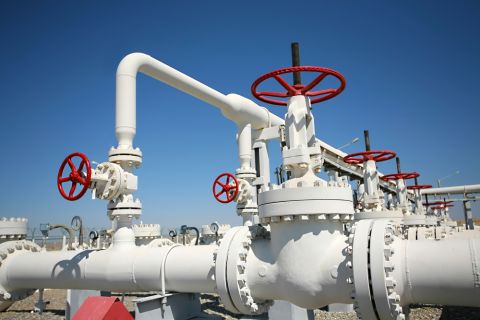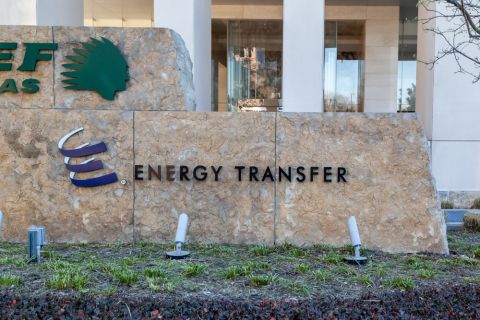
Reeves County and Pecos County have experienced the wealth of southern Delaware transactions.
The Permian Basin holds the crown as the largest and most important oil-producing province in the Lower 48. In 2016, some 2 million barrels per day (MMbbl/d)—more than 25% of the 8 MMbbl/d of Lower 48 oil production—came from the Permian Basin.
“That volume is now up to 2.2 MMbbl/d, and we expect production to continue to grow. Nearly 40% of the 654 horizontal rigs turning to the right in the Lower 48 today are in the Permian Basin,” said James Scarlett, vice president of RS Energy Group, who spoke at Hart Energy’s DUG Permian conference in April.
“And when we layer in factors such as increased drilling efficiencies, longer laterals and higher-rate wells, we’re adding more oil production from the Permian Basin than we ever have in history,” Scarlett said.
M&A activity is also frenzied in the Permian Basin. In 2014, the Permian made up less than 40% of total M&A in the Lower 48; in 2016 the Permian accounted for $23 billion in transactions, more than 60% of the total.
“In 2017, we have already seen $20 billion in transactions in three months in the Permian Basin,” Scarlett said.
The size of the prize drives all the rigs and deals. RS Energy analysis shows that at breakeven costs of $50/bbl and below, the Permian Basin holds 160 billion barrels of oil equivalent (Bboe), a stunning 80% of the total remaining resources in the Lower 48. “We have a basin running 40% of the horizontal rigs, that’s at the low end of the cost curve with tons of supply.”
 Uncovering differences
Uncovering differences
Of course, not every acre across the vast swaths of the Permian Basin is of equal quality. It’s a complex province with varying structural regimes, numerous reservoirs of varying lithologies and variable liquids cuts within those reservoirs.
The oft-discussed differences in ultimate recoveries across the Delaware and Midland basins are quite real, said Scarlett. In the Midland, a horizontal well can recover 100,000 boe to 125,000 boe per 1,000 feet, while in the Delaware, it’s not uncommon for wells to recover between 200,000 boe and 300,000 boe per 1,000 feet.
“We hear about operators chasing 900,000- to 1 million-barrel wells on both sides of the Permian. But keep in mind, they are doing it with a 7,500- to 9,000-foot lateral in the Midland, and a 5,000- to 6,000-foot lateral in the Delaware,” Scarlett said.
The ability to stack potential reservoir zones also props up the Permian Basin’s popularity. The total hydrocarbon column exceeds 3,000 feet in the Delaware and Midland basins, as compared with 1,000 feet in Oklahoma’s Stack play and 300 feet in both North Dakota’s Bakken and Texas’ Eagle Ford plays. “None of the other basins can compete with the Permian’s vertical potential,” he said.
While both basins are quite good, the Delaware’s resource potential eclipses that of the Midland Basin. That’s due to the Delaware’s higher EURs and higher number of prospective zones. And although the Delaware is gassier, the oil recoveries remain robust; oil-only EURs exceed 70,000 bbl per 1,000 feet across the basin.
Overall, the best area in the best basin is the State Line region of the Delaware. That’s where multiple intervals in the Avalon, Bone Spring and Wolfcamp plays straddle the New Mexico/Texas border and combine to deliver extraordinary potential, noted Scarlett. “That’s the sweet spot.”
SPACs
The newest oil–and-gas-focused special-acquisition companies (SPACs) are targeting the red-hot Delaware Basin, said Mike Wichterich, president of Delaware-focused Three Rivers Operating Co. III LLC.
“They are going to copy what’s been done before,” he told DUG Permian attendees. “They will come to the Delaware, and they will be a force to reckon with. And we will see it in super-short order.”
Just what’s been done before? Mark Papa entered into the Delaware Basin last year via the acquisition of Centennial Resource Development Inc. by Riverstone Investment Group LLC-sponsored Silver Run Acquisition Corp. The SPAC raised $500 million, including the overallotment, in its IPO in February 2016.
Papa, retired chairman and CEO of EOG Resources Inc., is a Riverstone partner. Centennial closed at $20.19 on April 11.
KLR Energy Acquisition Corp.’s acquisition of Delaware Basin-focused Tema Oil & Gas Co. closed in May. It will be renamed Rosehill Resources Inc. This SPAC is led by ex-EPL Oil & Gas Inc. CEO Gary Hanna. It went public in March 2016, raising $82 million including overallotment. KLREU units closed at $11.75. The predecessors to Tema have operated in the Permian since the 1940s.
Three new E&P-focused SPACs IPOed in April. A second Riverstone-sponsored vehicle—Silver Run Acquisition Corp. II— began trading in March, led by retired Anadarko Petroleum Corp. chairman and CEO Jim Hackett, who is also a Riverstone partner. It raised $1.035 billion, including the overallotment. By SPAC rules, at least 80% of the initial raise must be deployed in the first acquisition. Although each SRUNU unit, which was sold for $10, represents $10 in an escrow account until a combination is completed, units closed at $10.40 April 11.
Led by ex-Chesapeake Energy Corp. and Williams Cos. Inc. midstream executive Bob Purgason, Kayne Anderson Acquisition Corp. sold $350 million of units a few days after the Silver Run II offering. KAACU units closed at $10.
NGP Energy Capital Management LLC-sponsored Vantage Energy Acquisition Corp. sold $480 million of units in April, upsized from the previously expected $400 million. Led by ex-Encana Oil & Gas (USA) Inc. president Roger Biemans, the Vantage units closed at $10 in April.
Papa’s Silver Run I vehicle, which assumed Centennial’s name, paid some $34,000 an acre for the Delaware entry, Wichterich said, and is trading at some $60,000 an acre on Wall Street now.
“That was a huge Wall Street win. That was doubling your money in a year.”
 Acreage math
Acreage math
Wichterich’s two previous start-ups each held upstream properties in the Midland Basin. His current Three Rivers entered the Delaware instead. Both basins are “giants,” he said. “The Wolfcamp Shale in the Delaware and the Wolfcamp Shale in the Midland are both good.”
But, when Wichterich was looking for leasehold for Three Rivers III, acreage valuation in the Delaware was trailing that of the Midland. “It seems farfetched today based on all we’ve seen [in deal values since].”
Within the Delaware, the Three Rivers team studied well results in six areas. “Every one of these areas has good wells.”
Adding in NGL, the three northern Delaware regions “start to rise above.”
When including natural gas production, “all of a sudden, the northern three really stand out.” He added, “You know, people still pay money for gas. I know it doesn’t seem like it, but they do. And liquids are worth something.”
Wichterich credited RSP Permian Inc. with using “effective acres” math in describing Permian Basin leasehold—factoring for multiple landing zones—when IPOing in January 2014. He has come up with a supplemental formula: “cost per hydrocarbon-acre foot,” or HAF.
“There are 4,000 hydrocarbon feet in the Delaware,” Wichterich said. On this basis, a $20,000 acre in the Delaware is $5 per vertical foot. Meanwhile, a $20,000 acre in the Midland Basin, with 3,700 feet of hydrocarbon pay, is $5.40. In Oklahoma’s Stack play (1,000 feet), it’s $20; Eagle Ford (500 feet), $40; and the Bakken (300 feet), “it gets sort of ridiculous” at $67 per vertical foot.
“[HAF] is a really great comparison when people talk about the Permian being too expensive,” Wichterich said. Based on his HAF math, his Three Rivers III’s 60,000 net Delaware acres have 240 million hydrocarbon-acre feet. At $5 per, the company’s worth may be $1.2 billion.

The Midland Basin is in development, while the Delaware is in delineation. Loving County boasts the highest cumulative production in the southern Delaware over the past year.
No reserves left behind
When planning up to 84 wells in a square mile in the Delaware Basin, the task is further challenged by this additional goal: Leave no reserves behind. This is Devon Energy Corp.’s mantra in developing its stacked potential in southeastern New Mexico, according to Rick Gideon, senior vice president of U.S. operations.
“Let’s go to the center part of Lea and Eddy counties—the best part of our basin,” Gideon told conference attendees. There, it has 10 to 12 landing zones on average and can put in an average of seven wells per 640-acre section in each landing zone.
“All of a sudden, there is a potential to have 70 to 84 wells per section. How do I not strand reserves? And while increasing rate of return and bringing PV (present value) forward? We have to have advanced data to determine a lot of these landing zones. … That’s data analytics,” he said.
Devon is turning to its TRAC program: Total Reservoir Access Concept. Development of its in-house big-data machine began in 2011 as a first, master, data-management system. Between 1998 and 2006, the company had completed 27 mergers and acquisitions—bringing in 27 different sets of data. Launching the system “was tough and it took us a number of years,” Gideon said. But, “without it, we can’t do what we’re doing today. It’s like building a house without building your foundation. I like to think we’re building a very solid foundation.”
It was used in 2012 in a pilot project in West Texas and today, the company has “decision-support centers” in each of its field offices.
“At the same time, I’ll tell you it’s not easily adopted,” Gideon added. Among some personnel, “we’ve had it called everything from ‘Star Wars’ to ‘gee-wiz science.’” However, personnel have come around to relying on the additional input, “once they see the results and what it does for their job.”
Devon’s largest personnel adds within a workgroup during the oil-price downturn were in data and analytics. “Where we’re at today, the only limiting factor to what we will do with our advanced analytics will be our imagination. I truly believe we can [become] more efficient than where we are today.”
 Devon has 285,000 net acres prospective for Bone Spring, 225,000 for Wolfcamp, 60,000 for Leonard Shale and 80,000 for Delaware sands. It plans to spend $700 million in the basin this year—about 60% of that in the Leonard and Wolfcamp.
Devon has 285,000 net acres prospective for Bone Spring, 225,000 for Wolfcamp, 60,000 for Leonard Shale and 80,000 for Delaware sands. It plans to spend $700 million in the basin this year—about 60% of that in the Leonard and Wolfcamp.
It exited 2016 with $2 billion of cash and a $3-billion, undrawn bank facility. Its investment-grade credit rating continues as it completed $3.2 billion of divestments during 2016.
Companywide, it produced 244,000 bbl/d and 537,000 boe/d in fourth-quarter 2017. First-90-day IPs during 2016 were the best in the company’s 45-year history—up more than 300% from 2012.
Gideon said Devon is often asked, “How do you get that much growth?” He said it’s primarily from having “a focused plan in some of the best resource plays. And one of the ways you do that is via the vehicle of big data.”
Devon’s U.S. reserve additions in 2016 were at a finding cost of $5/boe, excluding property-acquisition costs. From the Delaware in particular, its net production averaged 54,000 boe/d in the fourth quarter—72% liquids. Lease-operating expenses per boe declined to $7.42 from $16.87 in the first quarter of 2015.
It plans to average seven rigs this year in the Delaware and exit 2017 with between eight and 10. This is up from three rigs at year-end 2016.
Wells are being drilled about 84% faster per foot today than two years ago, Gideon said. “Another way of saying that is we’re drilling almost twice as many feet a day…which is good because our lateral length is getting longer also.”

Recommended Reading
Ozark Gas Transmission’s Pipeline Supply Access Project in Service
2024-04-18 - Black Bear Transmission’s subsidiary Ozark Gas Transmission placed its supply access project in service on April 8, providing increased gas supply reliability for Ozark shippers.
Kinder Morgan Sees Need for Another Permian NatGas Pipeline
2024-04-18 - Negative prices, tight capacity and upcoming demand are driving natural gas leaders at Kinder Morgan to think about more takeaway capacity.
Scathing Court Ruling Hits Energy Transfer’s Louisiana Legal Disputes
2024-04-17 - A recent Energy Transfer filing with FERC may signal a change in strategy, an analyst says.
Balticconnector Gas Pipeline Will be in Commercial Use Again April 22, Gasgrid Says
2024-04-17 - The Balticconnector subsea gas link between Estonia and Finland was damaged in October along with three telecoms cables.
Targa Resources Ups Quarterly Dividend by 50% YoY
2024-04-12 - Targa Resource’s board of directors increased the first-quarter 2024 dividend by 50% compared to the same quarter a year ago.




